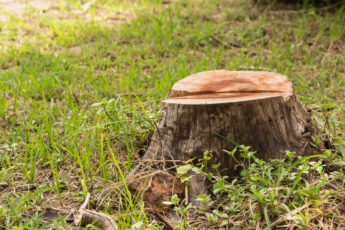All landscape plants require constant nutrients to grow and be healthy. Trees, shrubs and other plants suffer from nutrient deficiencies due to mineral and nutrient deficiencies in many urban soils. Fertilizers can help improve the plant’s growing conditions and provide it with the nutrients it needs for continued growth.
When caring for trees and shrubs, arborists often recommend deep root fertilization.
Deep root fertilization is one specific way to fertilize trees with problems or signs of deterioration. During this treatment, a mixture of nutrients and organic matter is injected into the soil around the roots of your trees using professional, high-pressure equipment.
Since most of the tree’s feeding roots are located at a depth of about 5 inches, liquid fertilizer is injected there. To ensure that every part of the root zone receives sufficient nutrients, arborists often apply soil injections throughout the entire area under the tree’s canopy, all the way to the drip line or canopy edge, and perhaps even further, depending on the tree species, health and the surrounding landscape.
The Benefits of Deep Root Fertilization
Improved Nutrient Uptake: Deep root fertilization ensures that target plants benefit from the fertilizer by delivering nutrients directly to the root zone, avoiding competition from other plants and soil bacteria.
Improved plant health: A plant’s overall health and vitality depend primarily on its roots. Deep root fertilization stimulates root growth and increases plants’ resistance to environmental stresses such as disease, pests, and drought.
Long-term effects: Deep root fertilization distributes nutrients into the soil, where they can be available to plants longer, unlike surface fertilization, which may only provide a short-term boost in nutrients. Over time, this can lead to further development and vigor.
Environmental Sustainability: Deep root fertilization minimizes runoff and nutrient leaching, reducing the risk of water contamination. Better root zone manipulation also helps conserve resources by optimizing nutrient uptake and minimizing waste.
When to Consider Deep Root Fertilization
While deep root fertilization has many benefits, only some gardens or landscapes will benefit. But there are some circumstances in which it can be especially useful:
Poor Soil Conditions: Deep root fertilization can help increase soil fertility and improve overall soil health if your soil is compacted, nutrient-poor, or otherwise unsuitable for plant growth.
Stressed or Declining Plants: Deep root fertilization can provide your trees and shrubs with a much-needed boost of health and vitality if they show symptoms of stress, such as yellowing leaves, limited development, or increased susceptibility to pests and diseases.
Newly Planted Trees and Shrubs: Newly planted trees and shrubs often benefit from extra nutrients to aid in establishment and root development. Deep root fertilization can help these plants get off to a healthy start and establish strong root systems.
How It’s Done: The Deep Root Fertilization Process
Deep root fertilization is fantastic for any tree or shrub with problems. Here are some tips to help you get started.
Assessment: Start by assessing your trees’ condition and requirements. Consider drainage, soil quality, and any stress or nutrient deficiency signs.
Consultation: If you need help with the best course of action, seek advice from a qualified arborist or landscape professional. They can help you choose the right fertilizer mixture and application technique for your trees.
Application: Since deep fertilization usually requires special equipment, it is better to leave it to specialists. But if you prefer to do it yourself, pay close attention to the directions and precautions to avoid damaging the tree or surrounding landscaping.
Monitoring: After fertilization, monitor the health and growth of your trees regularly. Adjust your fertilization schedule as needed based on changing conditions and the specific requirements of each tree.
When is the time to do a deep root fertilization application?
Deep root fertilization is usually done in early fall but can be applied in spring and summer. This helps the tree avoid stress from too much heat, lack of moisture, or rapid growth, giving it time to absorb essential nutrients before winter.
Your trees will benefit greatly and sustainably from just one deep application of root fertilizer.
The Bottom Line: Is Deep Root Fertilization Right for You?
While deep-root fertilization offers numerous benefits, it may only be necessary for some gardens or landscapes. Consider the following factors when deciding whether to implement this technique:
- Plant Species: Certain plants, particularly older trees and shrubs with deep root systems, are prime candidates for deep root fertilization.
- Soil Conditions: Assess soil quality and drainage to determine if nutrient deficiencies impede plant health.
- Maintenance Requirements: Evaluate your willingness and ability to invest in long-term plant care, including regular fertilization and monitoring.
Conclusion
Deep root fertilization provides a targeted strategy for improving tree health and vitality by delivering essential nutrients directly to the root zone. By knowing the benefits of deep root fertilization, when to apply it, and following recommended practices, you can do your part to maintain your tree’s long-term health and aesthetic appeal for many years. Adding deep root fertilization to your tree care regimen can significantly improve the health and lifespan of your landscape, no matter your level of gardening experience.
If you are unsure whether deep root fertilization is right for you or need help to do the deep root fertilization count on Greenwood Tree Company arborists, we are happy to assist you!







